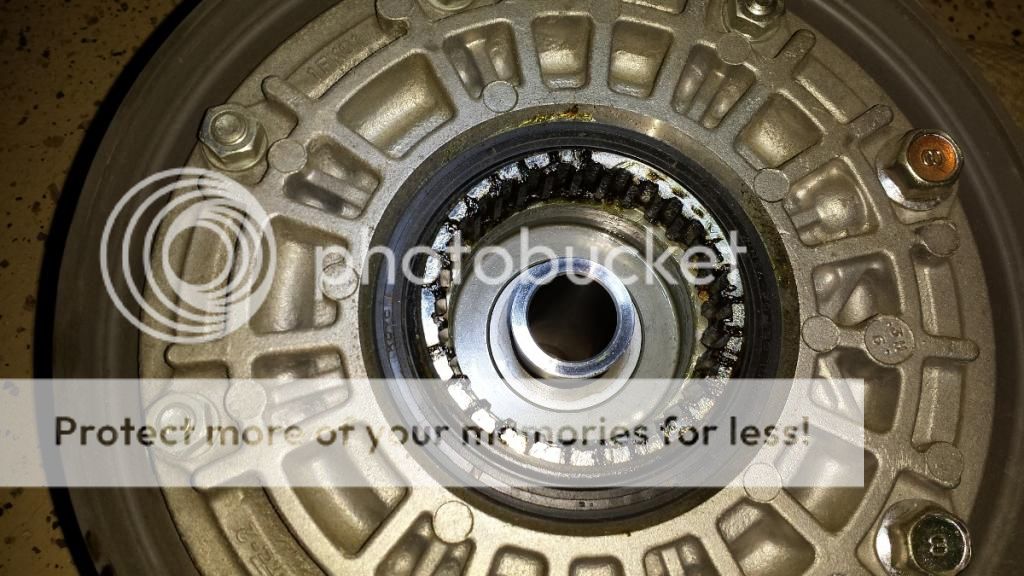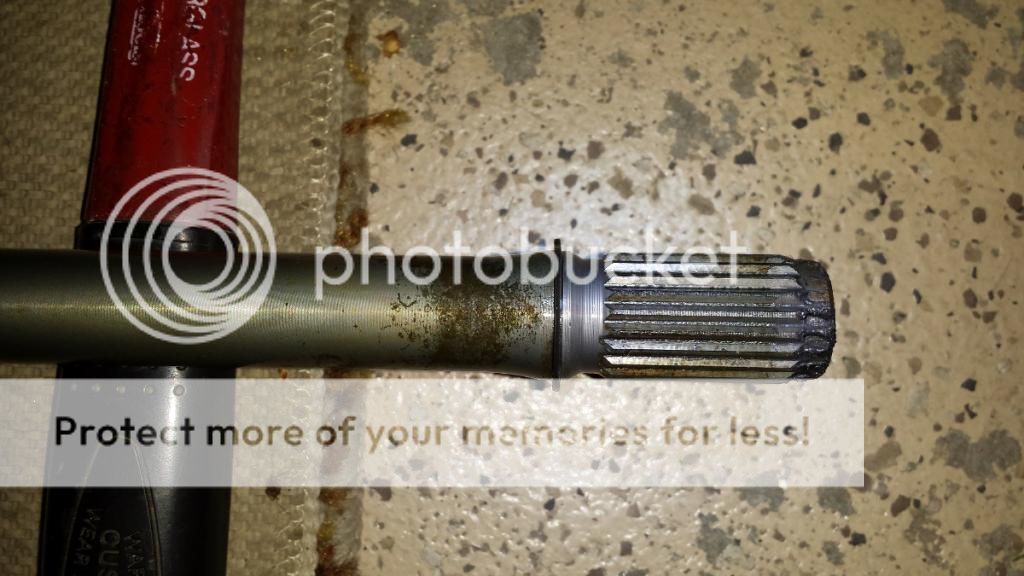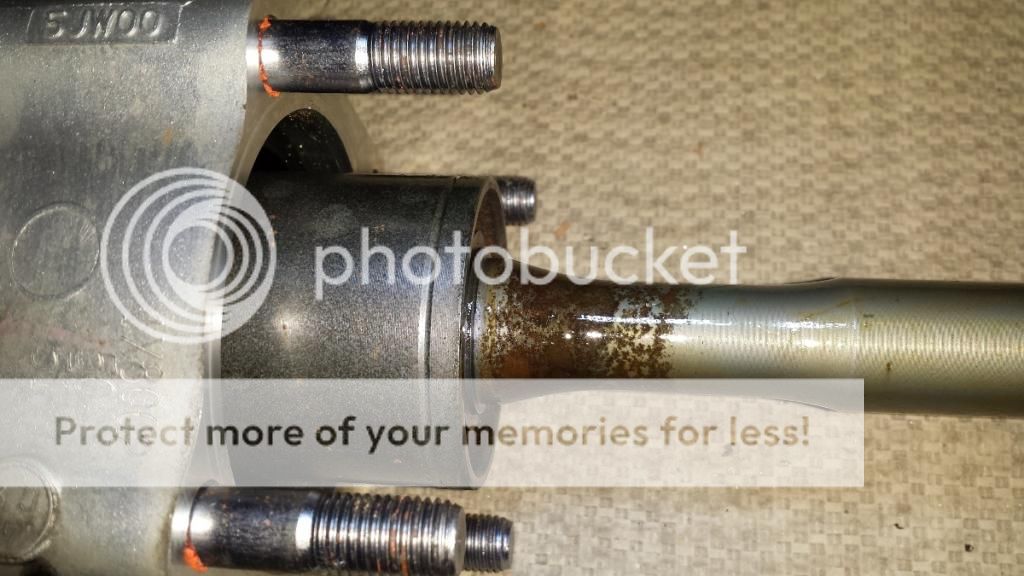Well...I had to remove the rear wheel today to get the tire changed for the first time...it now has 7,500 miles on it but the front OEM tire still has about 2,000 miles left. As Rayzerman and Yamafitter suggested, I pulled the pumpkin and drive shaft to check for proper grease and this is what I found:



The gear in the pumpkin and on the rear wheel are not too bad but they are a bit under-greased, as expected. I will correct that tomorrow.
More concerning is the oxidation already started on both ends of the drive shaft. This situation is documented in the fjrtech maintenance section. The shaft was completely dry, allowing the surface metal to begin corroding. I have applied a thin layer of final drive oil to the shaft to keep it free of corrosive air and will reassemble everything tomorrow afternoon after I get the new 023GT rear back from the dealer.
I'm curious to know if anyone else with a Gen 3 has checked out these items yet and what you have found. BTW, it was very easy to get the wheel off and the drive shaft out!



The gear in the pumpkin and on the rear wheel are not too bad but they are a bit under-greased, as expected. I will correct that tomorrow.
More concerning is the oxidation already started on both ends of the drive shaft. This situation is documented in the fjrtech maintenance section. The shaft was completely dry, allowing the surface metal to begin corroding. I have applied a thin layer of final drive oil to the shaft to keep it free of corrosive air and will reassemble everything tomorrow afternoon after I get the new 023GT rear back from the dealer.
I'm curious to know if anyone else with a Gen 3 has checked out these items yet and what you have found. BTW, it was very easy to get the wheel off and the drive shaft out!






























































